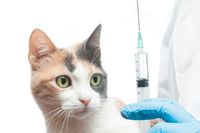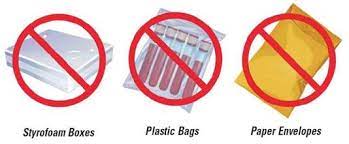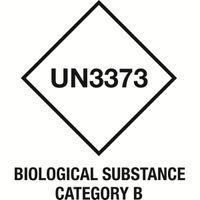The Export of cats from the Maldives: Preparing cats to travel
Cat adoptions - Cat travel - Travelling out of Maldives - Export out of Maldives
Several times I’ve been asked how tourists could adopt cats from the Maldives and transport them to their safe homes.
Well, when talking about the export out of Maldives, at the same time we need to look at the import regulations of the destination country, and this is where the difficulties lay.
For a detailed review on the export of a cat from the Maldives to the UK without the rabies titre testing and therefore, with mandatory 3-months quarantine, read Abbie's experience here.
If you want to take your cat from the Maldives to Canada, the procedure is pretty simple. Read about it here.
Rabies, and the Rabies Antibody Titre Testing process
Many countries in the world rely on a proof that the cat to be imported is free of rabies. Rabies is a viral zoonotic disease (which means it can get transmitted from animal to human) that causes progressive and fatal inflammation of the brain and spinal cord. Rabies still kills tens of thousands of people each year. Of these cases, approximately 99% are acquired from the bite of an infected dog.
Even though Maldives never had a case of a rabid animal, Maldives is also not officially considered "rabies-controlled” – at least not by the EU (note: the UAE considers Maldives “rabies-free”!).
This means that cats that are transported from the Maldives to a country that requires a serological Rabies Antibody Titre Test (RNATT), needs to be
- microchipped
- vaccinated against rabies and
- needs proof of a minimum amount of rabies antibodies in the blood of 0.5IU/mL (International Units per milliliter), which demonstrates an adequate response to the vaccination.
There are approximately 40 approved laboratories around the world that are authorized to conduct the test.
Some of the countries that require the test for importing a cat from the Maldives are:
The entire European Union, the United Kingdom, Hawaii, Guam, Japan, Australia, New Zealand, Korea, the Seychelles, Singapore, South Africa and others.
So let’s go through the process if you wanted to export a cat from the Maldives
The first thing to check in the process is always to read the import regulations of the country of final destination for the cat. There is more to consider, for example which airline will accept the cat, and would it let it fly in the cabin with you, in the baggage compartment with the owner on board, or a Cargo without an owner on board?
Let’s assume that the country of destination requires the titre testing:
- First of all, animals less than 12 weeks are not allowed to travel by plane, further would 12 weeks be the minimum age that a cat can be vaccinated against rabies.
- For most rabies vaccines, a single dose at 12 weeks of age or older in healthy cats is administered, repeated 1 year later. However, some veterinarians recommend a booster shot 4 weeks after the first dose, before continuing on an annual basis. There are rabies vaccines that are recommended to booster every three years after the first year’s booster. Always check with your veterinarian about the vaccination schedule depending on the product they use.
- Before or during the rabies vaccination you must make sure that your cat is implanted with an approved ISO 15 digit non-encrypted microchip identification. Vaccines that are not tied to a microchip do not count.
- Earliest thirty days after the successful rabies immunization date can blood be drawn to be tested for rabies antibodies.
- You must use blood test tubes without anti-coagulants (no LI-Heparin, no EDTA tubes!) unless your laboratory requests something different. You can submit either 5ml blood, or 500µl-1ml serum after spinning in a centrifuge.
- The serum can be stored in the fridge (4°C, one week) or in the freezer (-20 °C, one moth) until transport. The quality of the sample may decrease slightly during this time. Transport always has to be done cooled (4°C or cooler).
Packing and labelling
The sample needs to be labelled “Exempt Animal Specimen - Serum from a cat” and "For laboratory use only". Specimens collected from animals that have a minimal likelihood of containing pathogens may be transported as Exempt Animal Specimens if they are transported in packaging that prevents any release of the specimen. Exempt Animal specimens are not subject to IATA Dangerous Goods Regulations or ADR regulations. Specimens for rabies antibody determination do NOT have to be reported to the BRO (Bio Risk Officer)!
The packaging must not break under normal transport conditions! The sender is responsible for packing according to the regulations. The packaging (e.g. of serum or blood samples) must consist of three components:
1) A vessel as primary packaging: leak-proof, watertight container with a tight seal. When placing multiple primary tubes in a single secondary package, the primary tubes must be separated by an absorbent material. Sufficient padding and absorbent material must surround each primary receptacle containing liquid. Primary containers must be carefully labeled with a waterproof pen, e.g., for rabies antibody testing with the pet's microchip number and possibly the pet's name.
1b) Absorbent material
• Place absorbent material (cellulose, kitchen roll material, or paper towels) between the primary and secondary containers, and use enough material to absorb the entire contents of all primary containers.
2) A secondary container (secondary packaging)
• The secondary container cannot serve as an outer shipping container! It must be impervious to liquids such as serum or blood.
• Place an enclosed document, e.g., rabies form - preferably in a plastic bag - between the secondary container and the outer packaging
• When sending serum, place a cooling cartridge in the secondary container next to the samples - do not use dry ice! Transport always has to be done cooled (4°C or cooler)
3) Outer packaging: The primary container (1) and secondary packaging (2) must be enclosed in an outer packaging (3).
• The outer packaging must be rigid. Foam boxes, plastic bags, and paper envelopes are not suitable outer packaging!
• The outer shipping package (3) must be labeled on the address side with the words "Exempt Animal Specimen(s)" or "Exempt Veterinary Specimen" and "UN3373 BIOLOGICAL SUBSTANCE CATEGORY B". Some shipping companies also require the biohazard label.
Each laboratory will have their own forms to fill that need to be submitted with the sample. Once the specimen reaches the lab and is analyzed, it will take at least three days for each test to run. Depending on the laboratory, the report will also be issued by email. However, only the original hard-copy document is valid by law and you should try to get it sent to your address before flying with your cat!
With a few exceptions (e.g. Japan, Australia or New Zealand), the rabies antibody titer testing is valid for life of the animal, as long as you keep boostering the vaccine in the given intervals by the manufacturer of the vaccine.
The 3-months waiting time
Drawing blood for the rabies titer testing must be at least 30 days after the vaccination, and at least 3 months before the arrival of the cat in your home country!
Therefore, animals that travel from the Maldives into the EU, the UK or any other country where rabies titer testing is compulsory, would be at least 7 months old:
- Min. age for rabies vaccine: 12 weeks (3 months) of age
- Min age to draw blood for testing: 4 months of age
- Waiting time: 3 months
- = Min age to travel: 7 months of age







